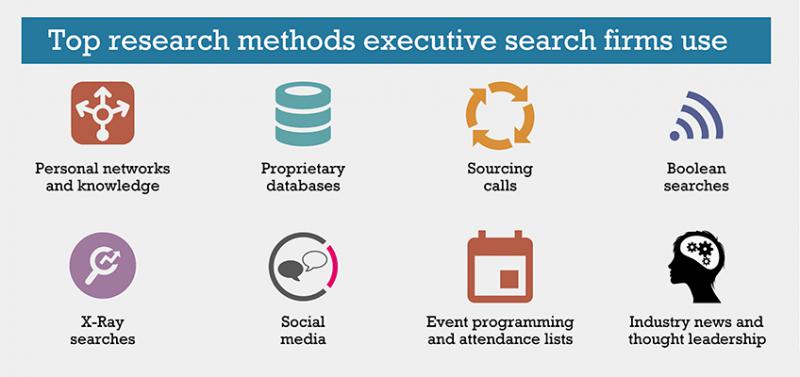
Executive Talent Magazine
Explore the executive search and leadership consulting profession's evolution and the shifting demands of clients
AESC President and CEO Karen Greenbaum heard a comment she’ll never forget. It came from an audience member during a panel discussion last year at the AESC Client Conference in Mumbai, India. “He raised his hand and said, ‘this business hasn’t changed in twenty years.’” The speaker said, “If I compared a proposal today with one that was written 20 years ago, they would be identical. This business hasn’t changed in any way, shape or form.” Greenbaum thought to herself, “that’s not true… is it?”
Greenbaum decided to explore the evolution of executive search, from its postwar beginnings to the present day. What she found is a vibrant, competitive, and deeply relevant profession not simply keeping pace with the global market for talent, but delivering sophisticated advisory work, elevating leadership worldwide.
Some History
Executive search has always been part of an advisory relationship, but when did the service evolve into a profession? In the mid-1940s, businesses in the US and Europe began to adapt to postwar prosperity. This led to the rise of competition for experienced executives, and a willingness to look for those leaders beyond the company walls and across international borders. That growing demand was the catalyst for the emerging executive search profession. Originally a function of management consulting, executive search became a thriving profession for consultants and a competitive advantage for clients. By the 1960s and 70s the need for experienced executives outpaced companies’ ability to fill those positions internally, and a more open market for talent expanded the demand for executive search. Today, executive search is a $12 billion industry.
In the last 20 years, global markets have undergone massive shifts, and what were emerging markets are now poised to exert a powerful influence on the world economy. How we communicate has amplified millions of voices, sparked social change, and connected continents. Technology continues to reinvent how people live, work and conduct business. Executive search has changed, too.
The Evolution of Search
In response to that speaker in Mumbai, Greenbaum suggests that the structure of a search may not have changed that much: take the assignment, determine the ideal candidate profile, conduct the search, complete the assessment and reference checking, negotiate to yes, and complete onboarding. She says, “If you’re just looking at that highest level, you might say nothing’s changed. But I think you have to go a level deeper.”
First, AESC research shows that client expectations have changed. The single most important criteria for selecting an executive search firm today is expertise across industry, function and market. Twenty years ago, one could have been a generalist. Greenbaum explains, “You would still come to the table with knowledge and experience, but what you were selling was your ability to do search.” Today, clients expect a “management consultant” who understands their industry and their function, and can bring that expertise to the table. Those who are generalists today bring that deep expertise, regardless of how they are organized.
Another change in client expectations is the demand for speed. AESC Members are seeing continuous and increased pressure to do everything faster. Greenbaum considers the reasons for the increased demand. “First, we are helping them fill their most important positions and they don’t want to wait six months to find the right CFO or CEO. The other reality is that technology has created an ability to move more quickly. The client has responded in kind and said, ‘I know you can go faster.’”
Another significant change in client expectations over the last 20 years is diversity. According to AESC research, the number one issue clients around the world identify is a lack of diversity among their leaders. Greenbaum says, “Diversity is certainly about gender, but it is also about race and ethnicity. And, it’s about diversity of skills, expertise and even age.” Creating a diverse team creates diversity of thought, which drives innovation and enhances a firm’s ability to connect with customers and employees.”
In addition to meeting new expectations, the profession has evolved in the scope of services as well as how those services are delivered.
The Assignment
A search assignment is no longer as simple as finding a person who has held a certain role in a certain industry for 20 years. Search has become a very complex service that requires a comprehensive understanding of the client, including the organization’s market and regulatory environment. The assignment also requires a deep dive into client culture, structure, and strategy, to ensure that the search results in a diverse slate of candidates with the highest potential to succeed.
The Search
Search itself is different, evolving from the old world rolodex to an entire suite of tools. Greenbaum explains, “Now, the search firm you hire has great networks and knowledge, but also proprietary databases. They conduct Boolean searches and x-ray searches, and they leverage social media. They look at industry news and thought leadership.” Search also requires leveraging tools and insights to fill high-demand roles that didn’t exist 20 years ago, and anticipate the skills necessary to fill roles that are likely to transform at an unprecedented pace. Greenbaum adds, “What hasn’t changed is the all-important human connection. That’s what makes this all work."
Assessment
Perhaps the most significant evolution over the last 20 years is in assessment. An effective candidate assessment still depends on in-depth interviewing and a deep understanding of candidates’ industry and functional expertise. Greenbaum says, “We did that 20 years ago, and we do it today.” However, current assessment techniques are more sophisticated, with a suite of technologybased tools combined with in–depth interviewing, role-playing, case studies, and situational responses evaluated by seasoned experts.
Thomas Friedman is a Pulitzer prizewinning author and a New York Times Op-Ed columnist who specializes in foreign affairs, globalization and technology. He writes, “The best jobs in the future are going to be what I call “STEMpathy jobs — jobs that blend STEM skills (science, technology, engineering, math) with human empathy.” AESC Members assess for those skills, for example, with tools that can determine if a candidate is an agile learner. Agility is critically important as hiring firms try to fill roles that didn’t exist ten years ago, as well as roles that are rapidly changing. The best candidates will have both technical expertise and soft skills, including emotional intelligence and agility. Greenbaum says, “Interestingly, our own assessment process is also STEMpathy process – combining science with human instinct and experience.”
Background and reference checking
With the additional layer of social media, a candidate’s political views, public interactions, and what they do outside of work could influence a hiring decision. AESC provides guidelines on how members can use this information fairly, appropriately and legally. For example, members only search public information and never ask for passwords. They maintain accuracy and give candidates an opportunity to respond to something adverse. And members know the laws about what they can and cannot ask. Every country is different, and privacy laws are more rigorous.
Negotiating to yes
In some ways getting to “yes” has not changed—consultants still must develop strong relationships and earn a candidate’s trust. More challenging today are the new, hard-to-fill executive roles in which the best candidates are in great demand, and are often fielding a number of great opportunities. Greenbaum says, “In any role we’re going after those who are the best in their field. After we’ve determined a great fit, the challenge is to help the candidate see our client as the right opportunity.” That’s where having real experience in getting someone to “yes” is critical.
Onboarding
Twenty years ago, onboarding was as simple as check-in calls, and that may no longer be enough. Greenbaum says, “We’re hearing from candidates that they wish they had more help with onboarding.” Greenbaum explains that candidates, consultants and clients have the same goal: “getting that candidate you wanted so badly to succeed” and consultants have an emerging role in helping assure that success.
Where search is headed
Clients are asking their advisors to provide counsel on a broader basis: for example, assessing leadership teams, advising boards on their effectiveness, succession planning and culture assessment. Greenbaum says, “The profession requires agility.” For example, clients are looking to fill relatively new C-suite roles. Greenbaum explains, “You can’t simply find someone who’s done a job for 20 years, when it’s a role that didn’t exist ten years ago.” She says, “When consultants go into an assignment they are not just filling a slot, they have to think creatively.”
Candidate profiles are changing, and clients are frequently looking more widely for key positions, requiring innovative approaches and greater depth from advisors. For example, the industrial segment of the global economy is redefining how it works, bringing new technology into the industrial world by tapping talent from outside the sector. Greenbaum asks, “How do you draw people from hot, new technology startup businesses to old school, 100 year-old industries looking for those new skills?” Professional advisors with deep tech and industry knowledge and relationships will give their clients the advantage.
Executive talent consulting must also accurately assess culture and determine cultural fit. About 70% of people who fail do so because of a lack of cultural fit. So breaking the code on cultural fit is key. Knowing the vision, mission and values of the organization hasn’t changed, but that’s no longer enough. New tools can add real context to those foundational statements.
Greenbaum asks, “What’s the difference between the things that are posted on the wall and what’s really happening in the organization?” Imagine a client who starts a search assignment with a goal of driving innovation. If the culture does not foster innovation, that client risks bringing in a person who is destined to fail.
Assessing cultural fit applies to the candidate, as well. For example, a candidate who thrives working as part of a team will be more successful in an organization that is highly collaborative than someone who has a preference for working independently. Greenbaum says, “A comprehensive assessment of organizational culture and a candidate’s cultural profile helps us better understand and predict candidate fit.” That level of assessment requires not only advanced tools but the judgment, experience and insight of an executive talent expert.
The role of executive search, specifically, is to provide insight to select talent who are high performing, better fitting and longer lasting. Greenbaum observes, “Whether it’s exploring new ways of assessing culture or a candidate’s ability to adapt, we are leveraging the latest tools with human insights.”
Looking back 20 years, executive search still requires specific steps, refined skills and trusting relationships to fulfill client expectations. But beyond those basics, it’s a whole new world.
AESC Members, Looking Forward
Firms should be looking to the future, asking important internal questions and examining their own processes. Have we differentiated our brand? Are we truly a trusted advisor? How do we strengthen industrial, functional, and market expertise? How do we leverage technology for speed and engagement? Has our assessment changed? Are we using the right new tools? Are we developing the next generation in our own profession? Are we bringing a diverse team to the client? Greenbaum reminds members that AESC membership is highly selective, and hopes members are leveraging the AESC brand. She says, “As members, you truly are the cream of the crop. Use AESC as part of your differentiation.”
